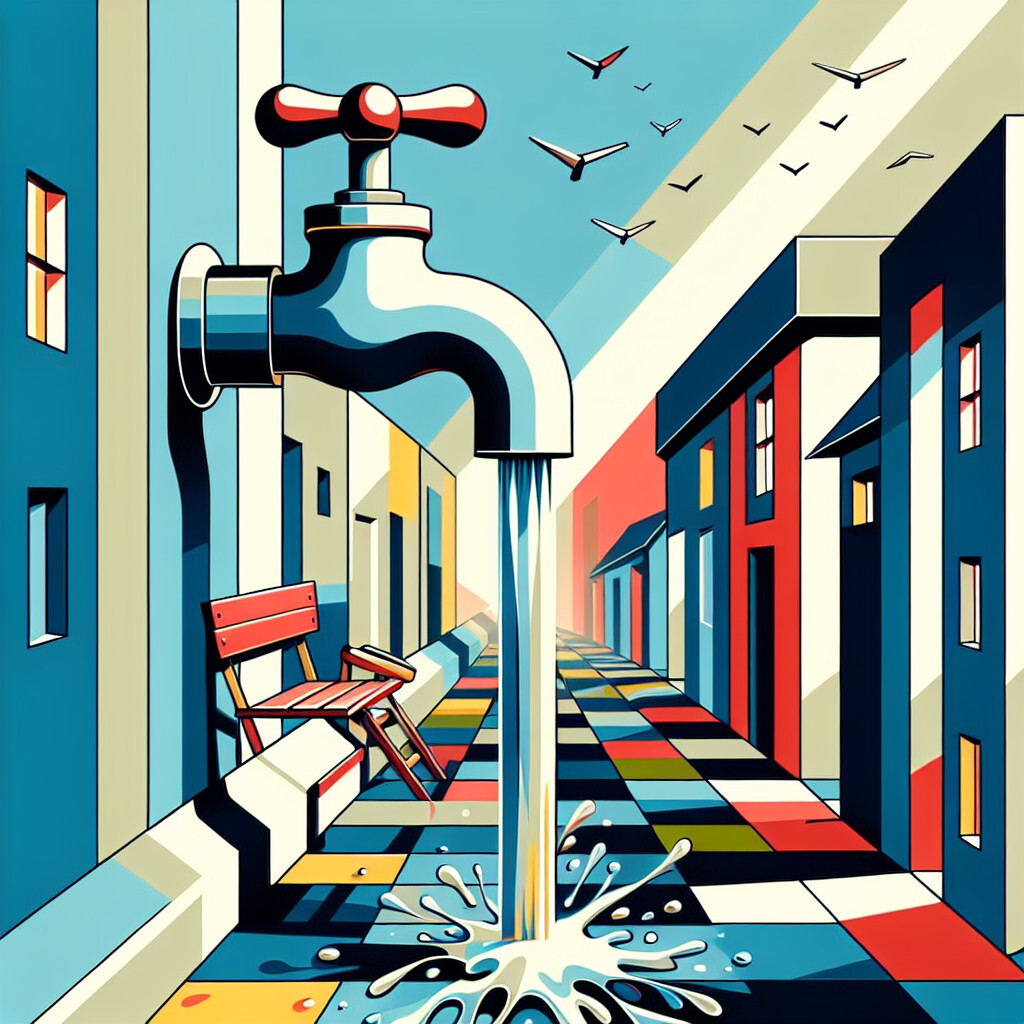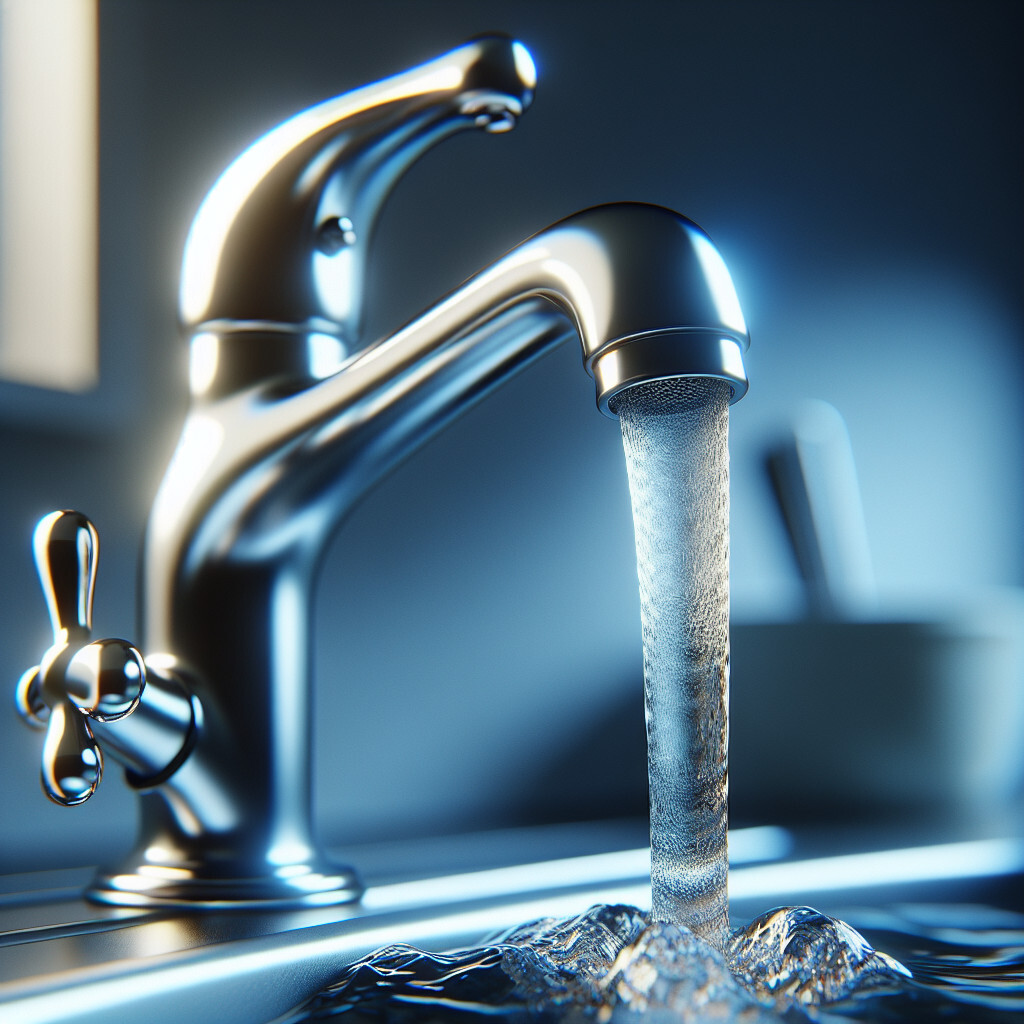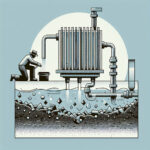-
Table of Contents
“First Tap Water: The Initial Pour of Purity”
Introduction

Tap water, also known as municipal water, is a system of purified water supply that is delivered to homes and businesses through a complex network of pipes, commonly known as plumbing. The concept of tap water first emerged in the 19th century with the advent of modern water treatment methods. This was a significant development in public health, as it provided a consistent and reliable source of clean water, reducing the spread of waterborne diseases. The process involves sourcing water from rivers, lakes, or underground, which is then treated and tested for impurities before being deemed safe for consumption and other uses.
Understanding the History of First Tap Water
The advent of tap water is a significant milestone in the annals of human history, marking a turning point in public health, sanitation, and urban development. The story of the first tap water is a fascinating journey that traces the evolution of human ingenuity and the relentless pursuit of progress.
The concept of tap water, as we understand it today, has its roots in ancient civilizations. The Romans, renowned for their architectural prowess, were among the first to develop a rudimentary form of tap water system. They constructed intricate networks of aqueducts and lead pipes to transport water from springs and rivers into their cities and homes. This was a revolutionary development, as it eliminated the need for citizens to manually fetch water from distant sources, thereby improving the quality of life and setting the stage for urban expansion.
However, the fall of the Roman Empire led to a decline in these sophisticated water systems, and for many centuries, people reverted to drawing water from wells, springs, and rivers. It was not until the 19th century that the concept of tap water resurfaced, driven by the Industrial Revolution and the rapid growth of cities.
In the United States, the first municipal water system was established in Philadelphia in 1801. This system, known as the Centre Square Water Works, used steam engines to pump water from the Schuylkill River into a water tower, from where it was distributed to the city’s residents through wooden pipes. However, this system had its limitations, as the water was not treated and was often contaminated, leading to frequent outbreaks of waterborne diseases.
The turning point came in the mid-19th century with the introduction of sand filtration and chlorination, which significantly improved the quality of tap water. The first city to implement a comprehensive water treatment system was Lowell, Massachusetts, in 1893. This marked a major breakthrough in public health, as clean, safe drinking water became widely available, leading to a dramatic reduction in the incidence of waterborne diseases.
The 20th century saw further advancements in water treatment technology, with the introduction of coagulation, flocculation, and activated carbon filtration. These processes enabled the removal of microscopic contaminants, further enhancing the safety and quality of tap water. Today, tap water in developed countries is subject to stringent quality standards and is often safer than bottled water.
The history of tap water is a testament to human ingenuity and the relentless pursuit of progress. From the aqueducts of ancient Rome to the sophisticated water treatment plants of today, the journey of tap water reflects our evolving understanding of sanitation, public health, and urban development. It serves as a reminder of the importance of clean, safe drinking water in our lives and the challenges we face in ensuring its availability for future generations.
In conclusion, the story of the first tap water is not just about the evolution of technology, but also about the progress of civilization. It is a story of how we have harnessed the power of nature, overcome challenges, and continuously strived to improve our quality of life. As we look to the future, the lessons from this history will continue to guide us in our quest for sustainable and equitable access to clean, safe drinking water for all.
Health Implications of First Tap Water
First tap water, also known as standing water, is the water that comes out of your faucet when you first turn it on, especially after a prolonged period of inactivity. This water has been sitting in your pipes for an extended period and may have absorbed various substances from the pipe material. The health implications of consuming first tap water are a topic of growing concern among health professionals and the general public alike.
First tap water can contain a higher concentration of heavy metals, such as lead and copper, compared to water that has been running for a while. These metals can leach into the water from the pipes, especially if the pipes are old or corroded. Consuming water with high levels of these metals over a long period can have serious health implications. Lead, for instance, is a neurotoxin that can cause developmental issues in children and neurological problems in adults. Copper, on the other hand, can cause gastrointestinal distress and, in severe cases, liver or kidney damage.
In addition to heavy metals, first tap water can also contain harmful bacteria. When water sits in pipes for extended periods, it can become a breeding ground for bacteria, including Legionella, which causes Legionnaires’ disease, a severe form of pneumonia. Consuming or inhaling water droplets contaminated with these bacteria can lead to serious illness.
Furthermore, first tap water can contain higher levels of disinfection byproducts (DBPs). DBPs are formed when the disinfectants used to treat public water supplies, such as chlorine, react with organic matter in the water. Some DBPs have been linked to an increased risk of bladder cancer, as well as potential reproductive and developmental issues.
However, it’s important to note that the risks associated with first tap water can be mitigated with a few simple steps. One of the most effective ways to reduce exposure to the potential contaminants in first tap water is to let the water run for a few minutes before using it for drinking or cooking, especially if the faucet has not been used for several hours. This flushes out the standing water, reducing the concentration of any heavy metals, bacteria, or DBPs.
In addition, regular maintenance and inspection of your home’s plumbing system can help identify and address any issues that could contribute to water contamination. For instance, replacing old or corroded pipes can significantly reduce the leaching of heavy metals into your water supply.
Water filters can also be a useful tool in ensuring the safety of your tap water. Many filters are designed to remove heavy metals, bacteria, and other contaminants, providing an extra layer of protection. However, it’s crucial to regularly replace the filters as per the manufacturer’s instructions to ensure their effectiveness.
In conclusion, while first tap water can potentially contain harmful substances, the health risks can be effectively managed with a few precautionary measures. By being aware of the potential issues and taking steps to mitigate them, you can ensure that your tap water is safe to drink.
The Evolution of First Tap Water Systems
The evolution of first tap water systems is a fascinating journey that underscores the ingenuity of human civilization. From the rudimentary aqueducts of ancient Rome to the sophisticated water treatment facilities of today, the development of tap water systems has been instrumental in shaping the health, hygiene, and overall quality of life of societies across the globe.
The genesis of tap water systems can be traced back to the ancient civilizations of Rome, Greece, and India, where the concept of public water supply was first introduced. The Romans, in particular, were renowned for their engineering prowess, constructing vast networks of aqueducts to transport water from distant sources to their cities. These aqueducts, some of which are still in use today, were the precursors to modern-day pipelines, marking the first significant step in the evolution of tap water systems.
As societies evolved, so did their understanding of waterborne diseases and the importance of clean drinking water. The Middle Ages saw the advent of rudimentary filtration methods, with people using cloth or sand to filter out impurities from their water. However, it wasn’t until the 19th century that the concept of water treatment truly took root. The Industrial Revolution brought with it a surge in population and urbanization, leading to increased pollution and the spread of waterborne diseases. This necessitated the development of more advanced water treatment methods, paving the way for the first municipal water treatment facilities.
The late 19th and early 20th centuries marked a significant turning point in the evolution of tap water systems. Scientists discovered that adding chlorine to water could kill harmful bacteria and viruses, a practice that is still widely used today. This period also saw the introduction of filtration and coagulation processes, which further improved the quality of tap water. These advancements not only made water safer to drink but also made it possible to supply clean water to larger populations, transforming the way societies functioned.
In the latter half of the 20th century, the focus shifted towards improving the efficiency and sustainability of tap water systems. Technological advancements led to the development of more sophisticated treatment processes, such as reverse osmosis and ultraviolet disinfection. These methods not only ensured the removal of harmful pathogens but also helped eliminate chemical contaminants, making tap water safer than ever before.
Today, tap water systems are a testament to centuries of innovation and progress. They are complex networks that encompass everything from source protection and water treatment to distribution and waste management. They are also increasingly being designed with sustainability in mind, with a growing emphasis on water conservation and the use of renewable energy sources.
In conclusion, the evolution of first tap water systems is a compelling narrative of human ingenuity and resilience. It is a story of how societies have continually adapted and innovated to ensure the availability of one of life’s most essential resources. As we look to the future, the continued evolution of these systems will undoubtedly play a crucial role in addressing the pressing water challenges of the 21st century.
The Role of First Tap Water in Modern Hygiene
The role of first tap water in modern hygiene is a topic that has gained significant attention in recent years. As the world becomes more health-conscious, the importance of clean, safe water for personal hygiene cannot be overstated. First tap water, the initial flow of water after a faucet is turned on, plays a crucial role in maintaining personal cleanliness and overall health.
First tap water is often the most contaminated, especially if the faucet has not been used for several hours. This is because water that has been sitting in pipes for an extended period can accumulate harmful substances such as lead and bacteria. These contaminants can pose serious health risks if ingested or used for personal hygiene purposes. Therefore, it is recommended to let the water run for a few seconds before using it, especially in the morning or after a long period of inactivity.
The quality of first tap water can vary greatly depending on the source and the condition of the plumbing system. In areas where the water supply is heavily chlorinated, the first tap water may have a strong chlorine smell and taste. This is not necessarily harmful, but it can be unpleasant and may affect the quality of personal hygiene practices such as brushing teeth or washing face. On the other hand, in areas with older plumbing systems, the first tap water may contain higher levels of lead, which can be harmful if ingested or absorbed through the skin.
Despite these potential issues, first tap water plays a vital role in modern hygiene. It is the primary source of water for many personal hygiene practices, including hand washing, bathing, and oral care. Without access to clean, safe first tap water, these essential hygiene practices would be difficult, if not impossible, to maintain.
Moreover, first tap water is also crucial for maintaining a clean and hygienic home environment. It is used for cleaning dishes, laundry, and household surfaces, all of which are essential for preventing the spread of germs and maintaining overall health. Therefore, the quality of first tap water can have a direct impact on the cleanliness and hygiene of the home environment.
In conclusion, first tap water plays a critical role in modern hygiene. Despite potential issues with contamination, it is an essential resource for personal hygiene practices and maintaining a clean home environment. Therefore, it is important to ensure that the first tap water is safe and clean. This can be achieved through regular testing of the water supply, proper maintenance of the plumbing system, and following recommended practices such as letting the water run for a few seconds before use. By taking these steps, we can ensure that first tap water continues to play its vital role in modern hygiene.
Q&A
1. Question: When was tap water first introduced?
Answer: Tap water was first introduced in the mid-19th century.
2. Question: Where was tap water first used?
Answer: Tap water was first used in the United Kingdom.
3. Question: What was the initial purpose of introducing tap water?
Answer: The initial purpose of introducing tap water was to provide a clean and convenient source of water for drinking and domestic use.
4. Question: How was the safety of tap water ensured when it was first introduced?
Answer: The safety of tap water was initially ensured through simple filtration and boiling processes. Later, chemical disinfectants like chlorine were introduced.
Conclusion
In conclusion, tap water is a readily available and cost-effective source of drinking water. However, its quality can vary greatly depending on the location and the local water treatment process. While it is generally safe to drink, in some areas it may contain contaminants or have a taste or odor that people find unpleasant. Therefore, it is important to have local tap water tested to ensure its safety and suitability for consumption.






